Stereotypes That People Have For Themselves, While Still Sometimes Harmful, Are Always So Much Funnier
Stereotypes that people have for themselves, while still sometimes harmful, are always so much funnier than the stereotypes that outsiders have for them.
Like outsiders are like “Asexual people are prudes and will yell at you for having sex!” and actual asexual people are like “All ace people want a dragon.”
Outsiders are like “Californians all surf and say dude a lot.” and actual Californians are like “If There Is Not A Taco Shop Within Five Miles Of Me At All Times I Will Literally Die.”
More Posts from Wolfspoot and Others

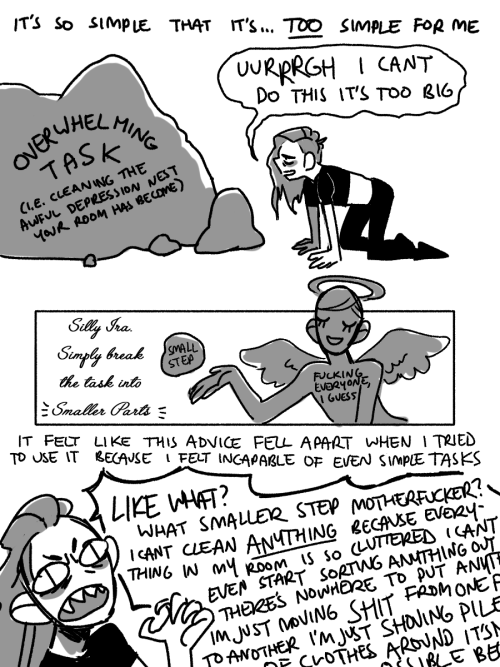
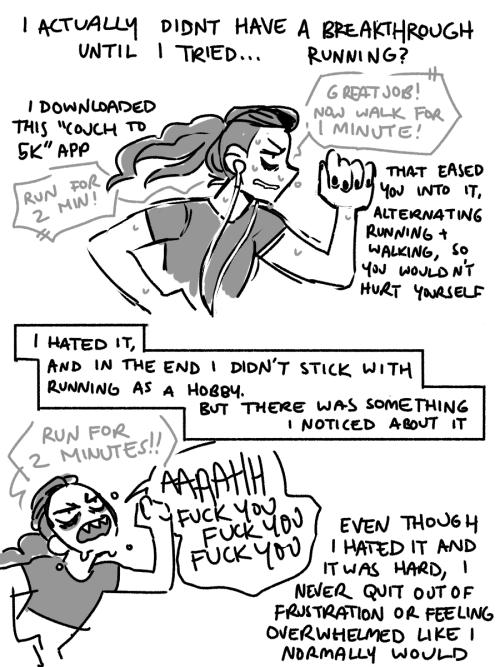
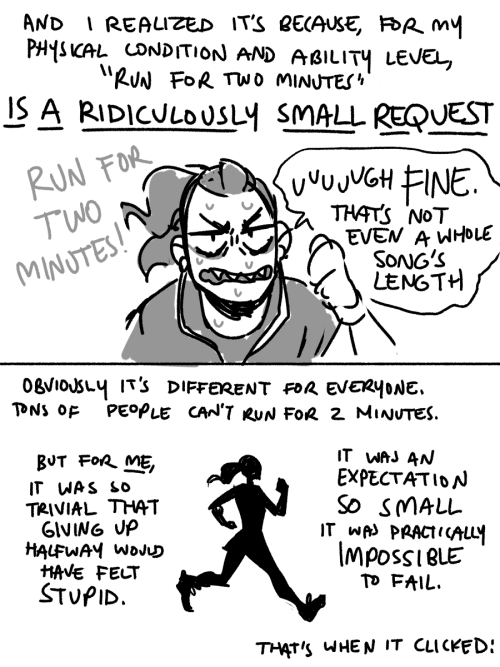
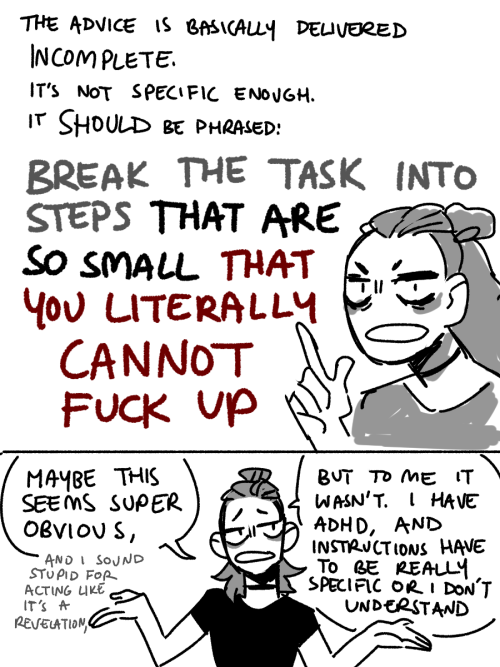
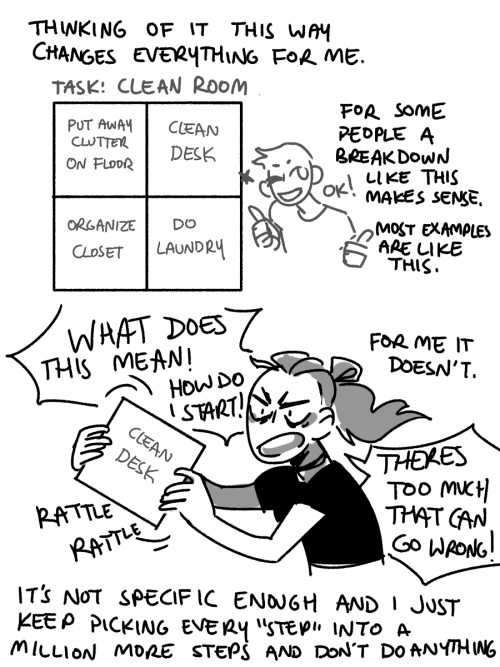
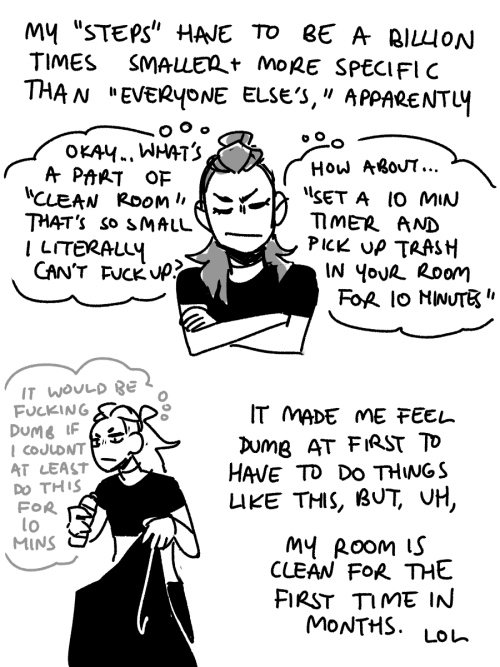
weird little brain tweak/reframing that helped me out. i Often find that advice that seemingly helps Everyone Else doesn’t make any sense to me, in ways that are hard to describe, and it can be really frustrating. but when i find a way to explain it to myself that finally seems to break through and make it click, it feels really good
When a person with ADHD complains of severe anxiety, I recommend that the clinician not immediately accept the patient’s label for her emotional experience. A clinician should say, “Tell me more about your baseless, apprehensive fear,” which is the definition of anxiety. More times than not, a person with ADHD hyperarousal will give a quizzical look and respond, “I never said I was afraid.” If the patient can drop the label long enough to describe what the feeling is like, a clinician will likely hear, “I am always tense; I can’t relax enough to sit and watch a movie or TV program. I always feel like I have to go do something.” The patients are describing the inner experience of hyperactivity when it is not being expressed physically.
At the same time, people with ADHD also have fears that are based on real events in their lives. People with ADHD nervous systems are consistently inconsistent. The person is never sure that her abilities and intellect will show up when they are needed. Not being able to measure up at the job or at school, or in social circles is humiliating. It is understandable that people with ADHD live with persistent fear. These fears are real, so they do not indicate an anxiety disorder.
holy SHIT
‘While bats can only sense the outer shapes and textures of their targets, dolphins can peer inside theirs. If a dolphin echolocates on you, it will perceive your lungs and your skeleton. It can likely sense shrapnel in war veterans and fetuses in pregnant women. It can pick out the air-filled swim bladders that allow fish, their main prey, to control their buoyancy.
It can almost certainly tell different species apart based on the shape of those air bladders. And it can tell if a fish has something weird inside it, like a metal hook. In Hawaii, false killer whales often pluck tuna off fishing lines, and “they’ll know where the hook is inside that fish,” Aude Pacini, who studies these animals, tells me. “They can ‘see’ things that you and I would never consider unless we had an X-ray machine or an MRI scanner.”
This penetrating perception is so unusual that scientists have barely begun to consider its implications. The beaked whales, for example, are odontocetes that look dolphin-esque on the outside—but on the inside, their skulls bear a strange assortment of crests, ridges, and bumps, many of which are only found in males.
Pavel Gol’din has suggested that these structures might be the equivalent of deer antlers—showy ornaments that are used to attract mates. Such ornaments would normally protrude from the body in a visible and conspicuous way, but that’s unnecessary for animals that are living medical scanners.’
-Ed Yong, An Immense World


You remember that post about the homestuck t-shirt design contest collaborating with hot topic? And how Hot Topic are the biggest art thieves? This is recent. As you can see above, I stumbled upon Hot Topic’s website and they are selling a very popular fan art put on a t-shirt, and did not ask permission from the original artist (rismo).
This shows Hot Topic still continues their art thievery. Hot Topic are still taking art from artists without their permission. This is disrespectful and appalling.
In some parts of the range, basket makers began to observe a decline in the numbers of black ash. They worried that overharvesting might be to blame, a decline caused by too much attention for the baskets in the marketplace and too little for their sources in the woods. My graduate student Tom Touchet and I decided to investigate. We began by analyzing the population structure of black ashes around us in New York State, to understand where in the trees’ life cycle the difficulty might lie. In every swamp we visited, we counted all the black ash we could find and wrapped a tape around them to get their size. Tom cored a few in every site to check their ages. In stand after stand, Tom found that there were old trees and seedlings, but hardly any trees in between. There was a big hole in the demographic census. He found plenty of seeds, plenty of young seedlings, but most of the next age class—the saplings, the future of the forest—were dead or missing.
There were only two places where he found an abundance of adolescent trees. One was in gaps in the forest canopy, where disease or a windstorm had brought down a few old trees, letting light through. Curiously enough, he found that where Dutch elm disease had killed off elms, black ash was replacing them in a balance between loss of one species and gain of another. To make the transition from seedling to tree, the young black ash needed an opening. If they remained in full shade they would die.
The other place where saplings were thriving was near communities of basket makers. Where the tradition of black ash basketry was alive and well, so were the trees. We hypothesized that the apparent decline in ash trees might be due not to overharvesting but to underharvesting. When communities echoed with Doonk, doonk, doonk, there were plenty of basket makers in the woods, creating gaps where the light would reach the seedlings and the young trees could shoot to the canopy and become adults.
In places where the basket makers disappeared, or were few, the forest didn’t get opened up enough for black ash to flourish. Black ash and basket makers are partners in a symbiosis between harvesters and harvested: ash relies on people as the people rely on ash. Their fates are linked.
"Braiding Sweetgrass" by Robin Wall Kimmerer
A reminder that humans are, in fact, an important part of the ecosystems we inhabit. We *can* be a benefit to the ecosystems that support us, and that our absence *can* be detrimental to the other organisms that we evolved with and lived alongside for thousands of years.
-
 titaniumgavel liked this · 1 week ago
titaniumgavel liked this · 1 week ago -
 haggadahhandittothem liked this · 5 months ago
haggadahhandittothem liked this · 5 months ago -
 strawberrycatworld reblogged this · 5 months ago
strawberrycatworld reblogged this · 5 months ago -
 strawberrycatworld liked this · 5 months ago
strawberrycatworld liked this · 5 months ago -
 emperorcandy liked this · 8 months ago
emperorcandy liked this · 8 months ago -
 therealbrigeedarocks reblogged this · 8 months ago
therealbrigeedarocks reblogged this · 8 months ago -
 miniaturetyphoonhologram reblogged this · 8 months ago
miniaturetyphoonhologram reblogged this · 8 months ago -
 liimlsan reblogged this · 8 months ago
liimlsan reblogged this · 8 months ago -
 liimlsan liked this · 8 months ago
liimlsan liked this · 8 months ago -
 oldmanontumbler liked this · 8 months ago
oldmanontumbler liked this · 8 months ago -
 wolfspoot reblogged this · 9 months ago
wolfspoot reblogged this · 9 months ago -
 ominous-meme liked this · 11 months ago
ominous-meme liked this · 11 months ago -
 jesswithane liked this · 1 year ago
jesswithane liked this · 1 year ago -
 majesticstardust reblogged this · 1 year ago
majesticstardust reblogged this · 1 year ago -
 eclipseyeger liked this · 1 year ago
eclipseyeger liked this · 1 year ago -
 elen-alambil reblogged this · 1 year ago
elen-alambil reblogged this · 1 year ago -
 pain-in-the-asguardian reblogged this · 1 year ago
pain-in-the-asguardian reblogged this · 1 year ago -
 siriex reblogged this · 1 year ago
siriex reblogged this · 1 year ago -
 only-a-heartbeat-away liked this · 1 year ago
only-a-heartbeat-away liked this · 1 year ago -
 dragonobsession reblogged this · 1 year ago
dragonobsession reblogged this · 1 year ago -
 dragonobsession liked this · 1 year ago
dragonobsession liked this · 1 year ago -
 yetanothertransgirl reblogged this · 1 year ago
yetanothertransgirl reblogged this · 1 year ago -
 garballax liked this · 1 year ago
garballax liked this · 1 year ago -
 thrownout564 reblogged this · 1 year ago
thrownout564 reblogged this · 1 year ago -
 thrownout564 liked this · 1 year ago
thrownout564 liked this · 1 year ago -
 brick3621 liked this · 1 year ago
brick3621 liked this · 1 year ago -
 savebatsfromscratch reblogged this · 1 year ago
savebatsfromscratch reblogged this · 1 year ago -
 savebatsfromscratch liked this · 1 year ago
savebatsfromscratch liked this · 1 year ago -
 monarch-of-anime-simping liked this · 1 year ago
monarch-of-anime-simping liked this · 1 year ago -
 faislittlewhiteraven liked this · 1 year ago
faislittlewhiteraven liked this · 1 year ago -
 fantajoseph reblogged this · 1 year ago
fantajoseph reblogged this · 1 year ago -
 fantajoseph liked this · 1 year ago
fantajoseph liked this · 1 year ago -
 lolipop1920 reblogged this · 1 year ago
lolipop1920 reblogged this · 1 year ago -
 coolaidstain reblogged this · 1 year ago
coolaidstain reblogged this · 1 year ago -
 coolaidstain liked this · 1 year ago
coolaidstain liked this · 1 year ago -
 garbagepailbear reblogged this · 1 year ago
garbagepailbear reblogged this · 1 year ago -
 flash-silver-4316 liked this · 1 year ago
flash-silver-4316 liked this · 1 year ago -
 underneaththetable reblogged this · 1 year ago
underneaththetable reblogged this · 1 year ago -
 indigotigress7 liked this · 1 year ago
indigotigress7 liked this · 1 year ago -
 follesegaskarth reblogged this · 2 years ago
follesegaskarth reblogged this · 2 years ago -
 marry-and-mirthful reblogged this · 2 years ago
marry-and-mirthful reblogged this · 2 years ago -
 writebystarlight reblogged this · 2 years ago
writebystarlight reblogged this · 2 years ago -
 writebystarlight liked this · 2 years ago
writebystarlight liked this · 2 years ago
I’m a young-adult woman with the hopes of becoming a well-known writer. I’m a dreamer, a music lover and a chaotic human being, curious about what the future will bring but without any idea of what to do with it. As for this tumblr, we’ll see. I will make an attempt to make an interesting place but for now I still have to figure out what to do with it.
167 posts






